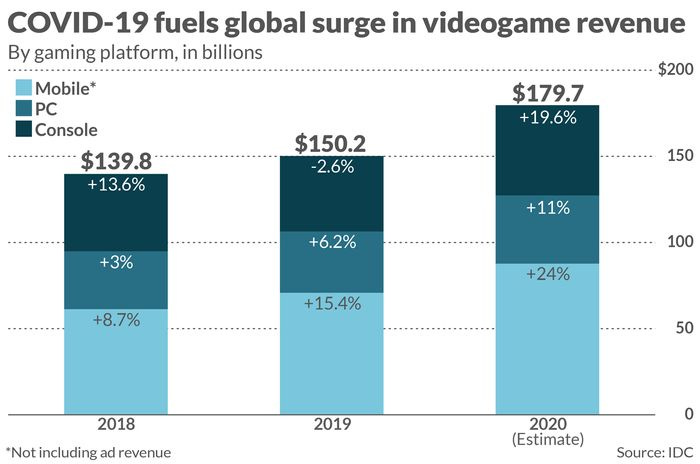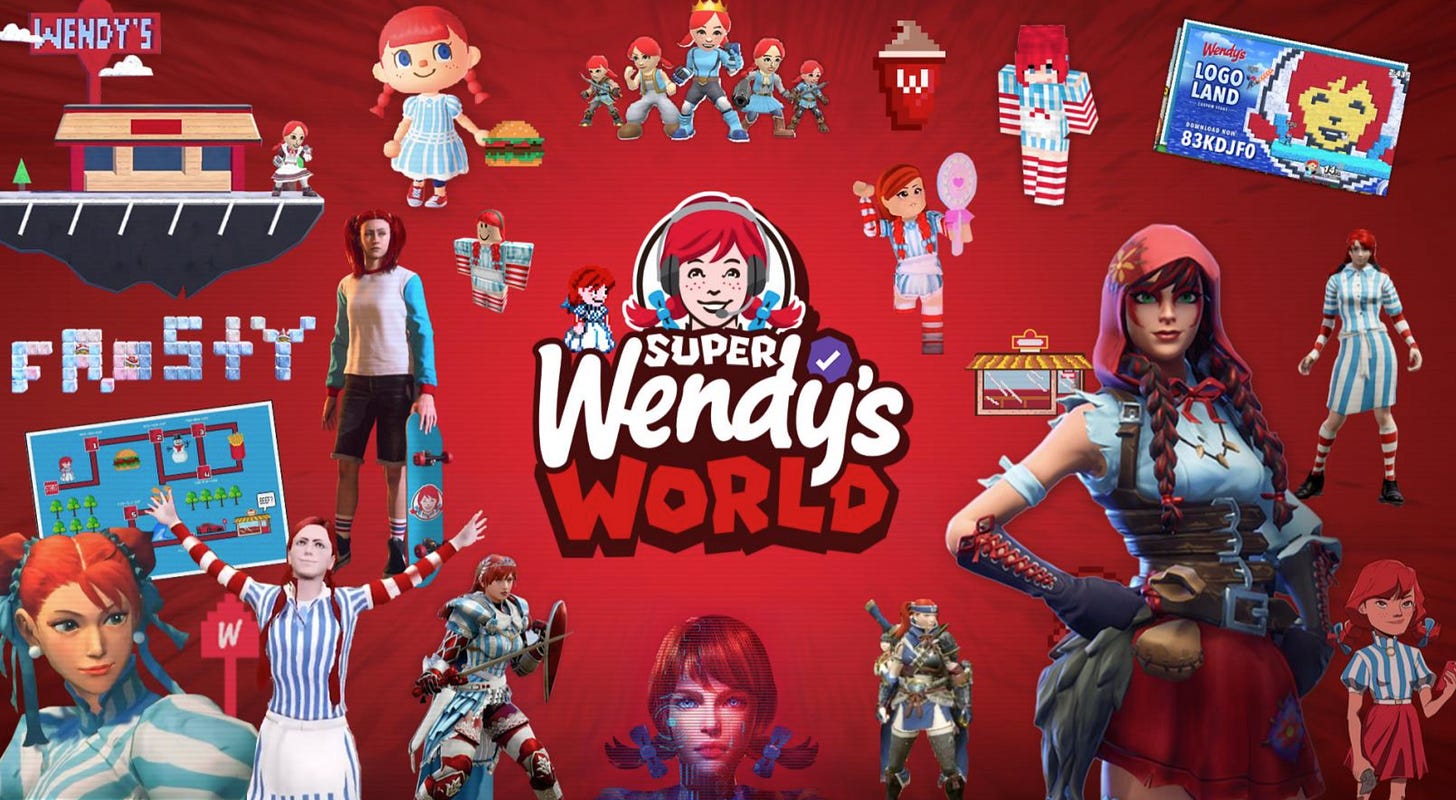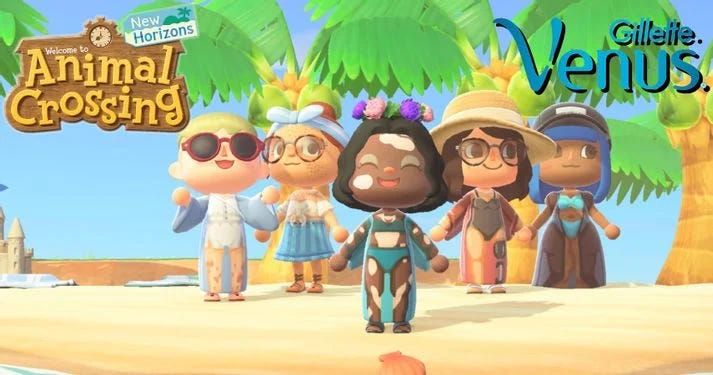Audiences Uncovered: Gamers
Hello Everyone! In this exciting edition of Audiences Uncovered, we're getting into the nitty gritty of gaming. Gaming has gained substantial ground in the entertainment industry over the last several years as illustrated by both our 2019 and 2021 trend reports. In 2019, more millennials had a gaming subscription than those with a traditional Pay TV subscription. Fast forward to 2021 where, after a global pandemic, the gaming universe reached an all time high with 2020 officially being deemed "The Year of the Casual Gamer".
Perhaps an unintended consequence of the streaming wars, increased curation of the entertainment experience has allowed gaming to swiftly swoop in and grasp the attention of millions worldwide.
This edition of Audiences Uncovered is ~1,750 words, approximately a 6 and 1/2 minute read
By the Numbers
3.1 billion: Estimated gamers globally as of 2020, almost 40% of humans! (IGN)
1958: The year that Physicist William Higginbotham created what is widely considered to be the first video game, Tennis for Two (APS)
$100K: value of trove of Atari games found in 2015 that was auctioned off on eBay, including “Pac-Man,” “Ms. Pac-Man,” “Breakout,” “Star Raiders,” “Pele’s Soccer,” and “Centipede.” (Stash)
24,437: monthly average users in the "gaming" subreddit (Metrics for Reddit)
159 Million: PlayStation 2 consoles sold solidifying its place as the GOAT. By comparison, popular Nintendo Switch units have sold 84.59 million since launching in 2017 (The Verge)
10 Billion: hours spent playing Roblox in Q1 2021. A platform for Lego-like user-generated games that is extremely popular with children 9-12, with a whopping 75% of them spending time on the platform (Venture Beat)
$18 Billion: dollars collectively spent by 13-39 year olds on some form of video games YoY 2019-2020. (Ypulse)
The Gaming Rush
To adopt a quintessential Dickens quote that perfectly sums up the odd period of time when the world went into lockdown and we were frantically searching for any place that had a Nintendo Switch in stock – and by we, I definitely mean me: It was the best of times, it was the worst of times, it was the age of Animal Crossing.
In 2020, people across the globe turned to the nearest game-enabled device, many for the first time. According to Nielsen SuperData’s 2020 year in review, 55 percent of people picked up video games — out of boredom, to escape the real world, and to socialize.
To the Moon
The gaming boom didn't happen overnight. It's been years in the making. In 2012, it was reported that amid the great recession, the gaming industry managed to grow four times faster than the entire US economy.
It should come as no surprise that the rise of gaming follows the ubiquity of smartphones. Recent advances in technology have provided people worldwide with a variety of ways to play, further cementing the gaming behavior in our lives.

Branching Out
The unprecedented realities of 2020 elevated gaming's position in households. As the streaming wars proliferate and the number of available households eventually reaches its cap, will more companies look to gaming as a source of subscriber growth and a way to keep eyeballs hooked for longer periods of time?
A 2018 Netflix earnings reported hinted at this tension, saying that “we compete with (and lose to) Fortnite more than HBO". So far, we've seen Netflix announce its ambition to add gaming to their offering. At CES 2021, TVs optimized and enabled for gaming were on full display. Even Peloton wants of piece of the pie as in mid-July they announced their plans to "explore the intersection of fitness and gaming" with an in-app video game called Lanebreak.
All of these events point to the fact that gaming as an entertainment vertical, can now stand on its own. What is undeniable is that when it comes to consumer attention, all eyes are on gaming.
All About "Gamers"
It might be time to rebrand
If you close your eyes and picture a gamer, what comes to mind? Chances are, the image produced by your mind's eye is likely a little bit off. According to a survey by the ESA, the average gamer is 34 years old, owns a house, and has children. In fact, seventy-one percent of moms surveyed by Activision Blizzard, for example, say they play video games – but only 48% identify with the “gamer” label.
A look into our own survey data, Media in Mind, shows that this checks out. Breaking down the world of gamers demographics, we do see the data start to take shape around certain profiles:
What this fact demonstrates is that there is a wide gulf of gaming behaviors between Candy Crush and Call of Duty. Gamers include everyone, so you'd miss the boat by thinking it's just a bunch of nerdy kids in their bedrooms. Any strategy that seeks to reach gamers needs to have a clear picture of the gamer behind the game.
Understanding their Motive
It's important as we think about reaching gamers in a relevant and non-intrusive way that we understand why gamers play games in the first place. Are they driven by looking for distraction or action? Are they looking for social or strategic features? Those nuances are more likely to illuminate clear connections opportunities than the fact that they play games alone.
Practicing what we preach and in-line with our Ascendancy of Audio trend, give a listen to the following podcast episode from “The Drum” for an insightful conversation about understanding tribes and motivations behind gaming audiences the opportunities that exist therein:
How do they engage?
It’s important to remember that consumers engage with gaming content in ways that go beyond direct play. Gaming video streams are extremely popular with young consumers especially with 71% of them saying they view that type of content.
Another arena seeing growing engagement YoY is esports. Last year as traditional sports leagues were paused due to the pandemic, esports leagues such as Riot Game's League Championship Series, were able to seamlessly pivot to remote broadcasts and saw minimal impact in their viewership.
What's Popular with Gamers Today?
Do Games Imitate Life or Vice Versa?
Game culture has long been at the forefront of internet culture. Many popular memes, also known as the language of the internet, have their origins in gaming. They often circulate in gamer spheres before lurching into the lexicon of the mainstream. This is sometimes both good and bad – if you've ever heard or seen "Finish Him!", "my body is ready", or "Gamergate" online, you can thank gamers.
The earliest video games in many ways created a framework for our minds to become comfortable interacting with computers. Today, they continue to shape the way we socialize both in virtual spaces and IRL.
The Gamification of Everything
The growing trend of Gamification, which in truth, deserves it's own deep dive is only a topic that began to appear in written text within the last 10 years.
As gaming expands, we've witnessed its ability permeate non-game environments. Its reach has extended to everything from health care to energy conservation efforts. Gamification has been seen as effective in encouraging behavior change but gamifying can bring scrutiny if it is perceived as a risk to consumers as with Robinhood.
More than just a Game
Perhaps, it's always been more than gaming. As our world becomes increasingly digitized, it's worth remembering that video games have also been at the forefront of our relationship with screens.
When the creators of Fortnite launched the game, they had no clue the heights it would reach – more hangout spot than game – but it became clear during Travis Scott’s Astronomical experience in the game last year. Funny enough, the social component was added after the game’s initial release and it’s the feature that put them at the forefront of a movement toward the meta-verse. The term, which was recently added to Mark Zuckerberg's vision, has been here longer than we think – and gaming environments in particular are primed for it. The proposed meta-verse is much bigger than gaming, but today's gaming popularity is the potential catalyst that quickens the adoption of tomorrow's meta-verse.
Oscar Wilde writes in his essay The Decay of Lying, “Paradox though it may seem - and paradoxes are always dangerous things - it is nonetheless true that life imitates art far more than art imitates life”. Perhaps, that thought will be on the minds of those who endeavor to engineer our brave new virtual worlds.
To orient yourself in this growing landscape, check out this Metaverse ecosystem infographic.
Diversity in Gaming, or Lack Thereof
It is easy to look at the universe of gaming with rose-colored glasses but we must also mention that while the universe of people who play games grows more diverse, the industry itself continues to be – as it has historically been – overwhelmingly dominated by cisgender white males. There are several areas where improvements must be made on both sides of the controller:
Developer diversity doesn't reflect diversity in gender, sexuality and race relative to the population of the United States.
A 2017 Survey conducted by the IGDA (International Game Developers Association) found:
American gamers are almost evenly split between men (54%) and women (46%), but IGDA data shows that just 24 percent of game developers are women
70 percent of developers are white, as compared to 6% Asian-Pacific Islander, 7% Hispanic and 2% Black
81 percent identified as heterosexual
In-game diversity and diverse characters are a rarity, despite the fact that members from a different races, ethnicities, gender identities and ability are all avid gamers.
Multi-cultural gamers spend more time on average playing games
Games with women protagonists have increased (5%-18% 2019-20), but historically there have been 3 times as many games centered on men
Many LGBTQ+ gamers feel that the representation of sexual orientations for game characters is non-existent or not represented well.
Accessibility remains a challenge for the 46 million gamers who have a disability.
Toxicity within the gaming community and during play sessions continues to be a problem.
A significant portion of gamers, however, say that they prefer to play as characters who resemble themselves and that they want to developers and publishers take a stand.
Organizations like AbleGamers, Women in Games, and GaymerX are working to inspire change, but there is much to be done in gaming – and beyond – as we push toward a more just and equitable society. To quote one game designer, “For players immersed as a protagonist who is a different sex, has a different skin tone, or just a different perspective from themselves, if that portrayal is authentic and human, there is a real opportunity for empathy and understanding”.
Get in the Game
At this point you must be wondering, what sorts of ads actually win with gamers and quite literally, how do we get in the game? We've collected some favorite examples to jumpstart the imagination.
In Game


Brand-Game Partnerships

Sponsorship

Gaming Content
McDonald’s and FaZe clan have teamed up for largest push in gaming creator content. An upcoming content series will likely revolve around the diverse stories of Faze Clan members themselves, the challenges they face in the gaming industry and other underrepresented youth.
A Quote to Remember
“What we don’t want to do is break the immersion. We don’t want to put an ad where it just completely ruins the gameplay. It’s got to fit and it’s got to feel intrinsic, like it belongs there.”
– Fran Petruzzelli, CTO of in-game ad company Bidstack.
Opportunities Uncovered
A look at opportunities we’ve uncovered to reach this audience:


Extra credit reading
7 Reasons Why Video Gaming Will Take Over (matthewball.vc)
Gaming as a Cultural Force (IPG Media Lab)
Where Has Your Tween Been During the Pandemic? On This Gaming Site (NYT)
If We Want To Talk About Diversity In Gaming, We Need To Be Intersectional (The Gamer)
Meet Axie Infinity, the Deceptively Cute Game with Huge Growth and a Huger Vision (NotBoring.co)
Why Video Games May Be Good For You (BBC Future)
These People Helped Shape Video Game Culture in 2020 (New York Times)
Are we in the Meta-verse Yet? (New York Times)
The Roblox Microverse (Stratechery)













